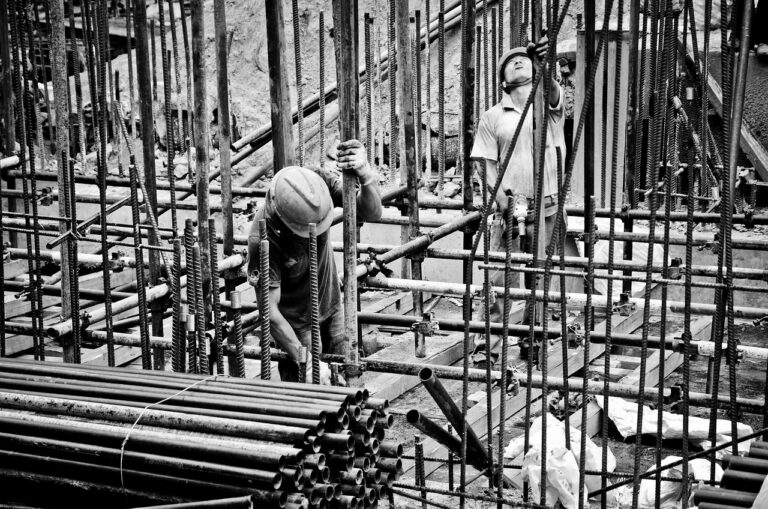“HR Magazine reports that companies investing $1,500 or more per employee per year on training average 24 percent higher profit margins than companies with lower yearly training investments.
CPM Quandary
When contractors and construction managers need project controls positions filled, they either advertise, or more often, they retain the service a recruiter because of low returns from the Help Wanted. That’s a factor of supply and demand that the industry has only itself to blame. Yet, it isn’t too late to for the industry to take notice and wise up.
I’m old school, and believe in cultivating employees such that they can look forward to growth in an organization for their future, as opposed to hitting a low glass ceiling. This ethic runs counter to the prevailing trend of outsourcing, or outside (the org.) hire. The former represents an ethic that invests in their people and their’ futures, the latter an ethic that values people as an investment.
The industry is blameful for the dearth of project controls professionals for a number of reasons, all of which have financial considerations as a driving factor:
- The building industry invests relatively little in training programs as compared to other industries. The subheading of ‘project control training’ is but a fraction of the whole of some $700-1,000/employee. The private sector is even more parsimonious when it comes to investing in training.
- Available training programs are hit or miss: the best ones are too expensive, or otherwise inaccessible, whereas half-cocked programs in Continuing Education and trade schools have negligible credibility in the industry: they don’t cut the mustard. In lieu of such a certificate, contractors may require an engineering degree of their project control staff.
- I know of no such program that requires internship in the field; something I feel is exigent for any building industry professional at sometime in his or her career.
Many contractors will place the blame squarely back on stakeholders who negotiate too aggressively, often to the extent that force builders to begin to cut back on services: time consuming CPM scheduling is the first service to go. However; no one can really ever say just how much a contractor allocates to project controls in the first place, to gauge whether or not he is underdelivering. Such is the nature of general conditions.
“Half-cocked CPM training programs simply don’t cut the mustard. I’ve met graduates who couldn’t schedule a kid’s birthday party.
The phenomenon of a generally poorly project controls constituency is perpetuated by the (sometimes willful) ignorance of stakeholders’ agents – be they architects or construction managers, whose inability to articulate a critical path assures stakeholders remain unenlightened, or only hear what they want them to hear.
I should think any stakeholder would want at least a general understanding of a project’s critical path, yet few even approach understanding the term itself. Naturally, there are always those who are too shy to admit their ignorance, which can be interpreted as arrogance when they feign comprehension and become involved in the decision making process, a handicap which seems to be a chronic presence.
“Push always comes to shove when an unenlightened stakeholder takes a contractor and his CPM timeline to task.”
Accordingly, men and women working the tools in the field often squint their eyes and chuckle amongst themselves at the sight of a scheduler in a hard hat walking the site. They may assume -and usually correctly – that the scheduler is “book-learned,” or not one of them. I always enjoy showing these Doubting Thomases my seasoned palms and fingers and telling them “they didn’t get this way counting money.” In short, I take some pride in sharing that fact with them. More importantly, I like them to get the message that they too can become successful project controls professionals, they only need opportunity.
The best advice I can give to field mechanics and others working the tools is: cherish your field experience, and use it to give you an edge when you jump into project controls. Ask your employer if they are willing to facilitate training. If you don’t get the response you wanted, you may have to seek alternative methods – such as online training.
I think many would jump at the opportunity to move out of the field – especially as they age out of physical labor type work to administrative, yet I don’t see opportunities happening enough: growth positions from manual field work, to administrative project controls.
“Not investing in employees is simply bad for business. The focus on making a quick buck is short sighted, and shows no promise of a future.
In absence of employer sponsored training, what sort of programs are available to even the most impecunious? A great many. Not everyone is an autodidact. Something in between self-taught and formal training is a more likely curriculum. For myself, it was necessity that drove me to study project controls: an early career sitework project required a schedule: I was the only one who was ‘game.’ The program was called Timeline.
No sooner did I prove a solid working superintendent, that I was assigned increasingly more complex project management duties. In effect, I was a hybrid superintendent/project manager. It was natural for me to join a firm – Clark Construction, that facilitated many of its smaller projects with such dual job descriptions. This practice kept the team lean and mean in hard times. The hybrid super/pms at Clark were crack builders, who always had summer schedule projects booked, and always delivered world class luxury fit-out.
As I learned more about cost calculations back in the ‘90’s, I was soon able to assist in estimating MEPs. Soon, CPM scheduling requirements began appearing. Having no scheduling personnel, it was incumbent on me to learn how to build a schedule. I had no Idea that it would take years to learn CPM. I am still learning every day. I may not be the most technically brilliant scheduler, but that was never my goal. My goal is to find the best working solution to the riddle of the critical path of my schedules. Doing that requires more than mere technical skills.










